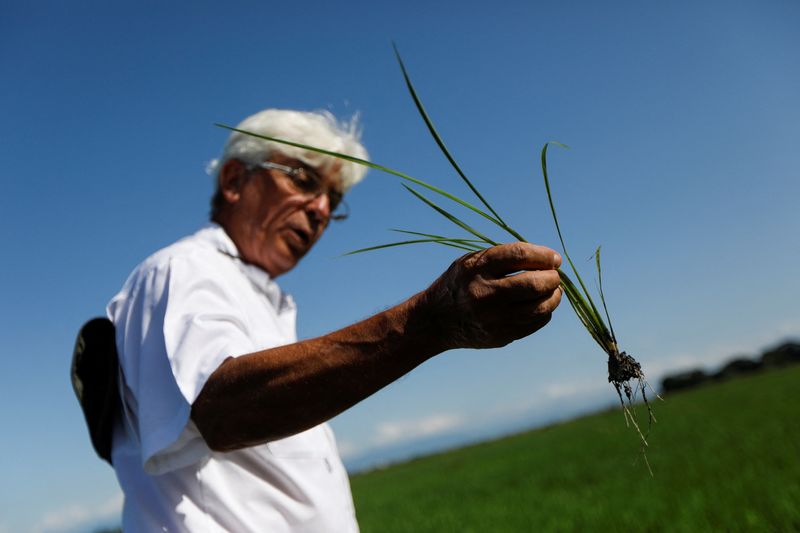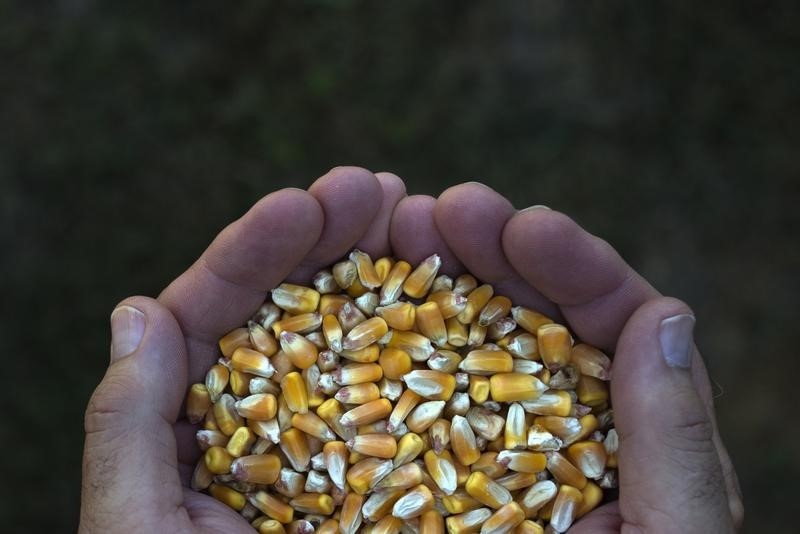By Mayela Armas and Vivian Sequera
TUREN, Venezuela/CARACAS (Reuters) – More than 300 hectares of green corn and rice planted by Roberto Latini in the western Venezuelan state of Portuguesa ripple under a bright sun and blue sky.
The growing crops – which were due to be harvested in September – could only be planted because Latini secured funding for fertilizers and seeds from an agricultural guild, which has stepped in to provide financing for farmers in the economically troubled country.
Venezuelan growers of rice and corn – staple crops for domestic consumption – have reversed a years-long slump in production thanks to fertilizer and seed loans from buyers, freeing up money to invest in generators and other efforts to combat utility cuts. said dozens of farmers.
The loans – from at least six guilds in Portuguesa and 20 rural crop-buying groups – come amid tight credit restrictions that make traditional loans from banks nearly impossible to obtain, and inflation of more than 50%.
“One survives with the support of the guilds that provide the fertilizers,” Latini said as he gave a tour of his farm. The added production could grow further if more financial resources were available.
The terms of the loans, which are often repaid with the harvest itself, can still be unaffordable for some small growers.
Without more regular financing from banks, farmers told Reuters that problems will persist and some producers could close operations.
Agricultural production in Venezuela, which is largely dependent on national food production, has plummeted over the past decade after years of price and currency controls, land nationalizations, fuel shortages and disruptions to public services.
President Nicolas Maduro eased currency restrictions in 2019, allowing transactions in dollars and giving the economy some breathing room. He has also made an orthodox effort to reduce inflation with credit restrictions and lower spending.
While “forward selling” of crops is common in other Latin American countries such as Brazil, the practice is new and growing in Venezuela, local agricultural experts told Reuters.
According to local consultancy Globalscope, bank loans available to farmers in Venezuela amount to approximately $330 million. Much of that financing goes to producers of small-scale export crops such as sesame and mung beans.
According to government figures in those countries, the availability of credit is between nine and twelve times higher than in Bolivia and Colombia.
“There is no protection for the (agriculture and livestock) sector in the financial sector,” said Gerardo Mendoza, head of local agricultural consultancy Agrotributos.
The ministries of communications, agriculture and finance did not respond to requests for comment. Neither does the central bank.
REFUND WITH WASHED
Production of rice and white corn rose to 1.2 million tons last year, 29% more than in 2022, although that increase is still well below the production of 3.4 million tons a decade ago, according to figures from the agricultural guild.
Giorgio Ruffato, also a rice and corn farmer in Portuguesa, represents an association that helps finance farmers.
“We give them seeds, insecticides, assistance with machine repairs and services to store their crops,” he said at his farm, which has a small laboratory where he checks for crop damage from pests or fungi.
Producers repay loans by transferring their harvest or with their income from sales to processing plants, which pay them for the harvest in dollars based on international prices.
But some small producers still don’t earn enough to pay back the guilds.
“Many small producers will disappear, some of us have debts (to associations or companies),” said farmer Cesar Tovar, who sold some machines to cover his costs.
Higher costs for producers, combined with annual inflation of 51.3%, could trickle down to consumers.
“Any other form of credit is burdensome. If you add (public) services and taxes, it can all have an impact on prices,” says economist Hermes Perez.
Some farmers make large investments in roads and backup energy sources because of poor infrastructure and frequent cuts in water and electricity.

“We have had to use solar panels that charge the batteries,” said Luis Hernandez, a farmer in Apure state who is struggling to get fuel.
Latini uses transformers on his land to water the rice plants even when the power goes out, while Ruffato has repaired some local roads to transport crops.


